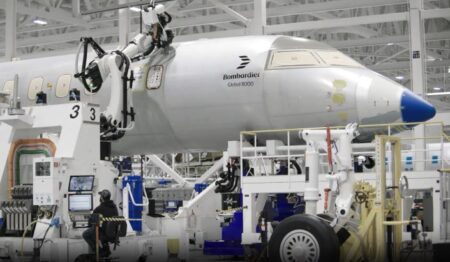The European Union Aviation Safety Agency has launched two initiatives aimed at preventing mid-air collisions in general aviation through improved aircraft visibility technology.
Both programs address the safety challenge for general aviation (GA) operators who traditionally rely on visual separation in busy European airspace. The initiatives focus on making electronic conspicuity devices more accessible and standardized for smaller aircraft.
EASA’s data shows an average of six fatal airborne collisions involving general aviation aircraft occur annually, resulting in 13 fatalities. The new measures aim to prevent these and are part of the agency’s GA Flightpath 2030+ safety strategy.
“The ability for every pilot to have access to affordable, compatible systems to enhance their situational awareness will be a major step forward in safety in this vital sector of the aviation community,” said Florian Guillermet, EASA executive director.
Speaking at AERO Friedrichshafen 2025 in Germany this week, Guillermet emphasized the importance of general aviation as the training ground for future commercial pilots and its significance to the broader aviation ecosystem.
The first initiative is the Conspicuity Declaration, a voluntary policy statement established by 11 participating aviation authorities. It aims to encourage adoption of conspicuity devices and technical standards including ADS-B out and ADS-L.
Signatories to the Conspiccuity Declaration commit to fostering development of equipment ensuring all airspace users can be electronically visible to other aircraft. They also agree to collaborate on analyzing data from these systems to improve future safety measures.
The Declaration emphasizes promoting positive safety culture and responsible airspace management while ensuring appropriate protection of collected data.
The second initiative establishes the ADS-L Coalition, and is focused on technology providers adopting ADS-L as a unified interoperable protocol for light aviation and drones. This standard will enhance pilot situational awareness through consistent electronic visibility.
Organizations joining the coalition commit to integrating ADS-L into their products and promoting wider adoption to maximize safety benefits through interoperability.
Both initiatives represent implementation of key elements from EASA’s GA Flightpath 2030+ strategy, which aims to enhance safety culture, enable sustainable growth, and embrace digital technology in general aviation.
The prevention of airborne collisions has been identified as a priority Key Risk Area in EASA’s Annual Safety Review and is reflected in the European Plan for Aviation Safety priorities.
EASA notes that these voluntary initiatives do not affect mandatory occurrence reporting requirements under Regulation (EU) No 376/2014 or other applicable European Union or national legislation.





